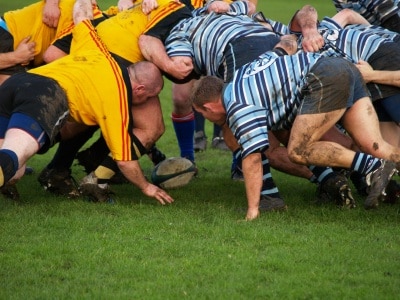I just finished the book The Hour Between Dog And Wolf: Risk Taking, Gut Feelings and the Biology of Boom and Bust by neuroscientist John Coates. It is definitely a good book and I learned quite a bit from it. If you ever get the chance, I urge you to read it. Most of the book talked about the biology of our intuition and gut feeling. However, there was a section in there that talked about mental toughness—and that is what I want to talk about in this post. John Coates talks about mental toughness from a physiological perspective, which I thought was extremely interesting as most literature about mental toughness have roots in psychology.
Mental Toughness from a Physiological Standpoint
From a biological and physiological standpoint, there seems to be three distinct chemical classes that control mental toughness: catabolic hormones, anabolic hormones, and amines (adrenaline, noradrenaline, and dopamine).
Catabolic Hormones
Cortisol is foundational in supplying the human body with energy when we exert mental and physical effort in full force. It is one of the chemicals that is released when we are stressed and enables us to elevate our game and get in the zone during that acutely stressful period. But because cortisol strips our body of nutrients in order to supply our body with immediate energy, cortisol is not to be used for long. After a few days or weeks, we begin to experience a lack of nutrition in our body because of cortisol has used it all. This is partly why those who suffer from chronic long-term stress suffer from multiple mental and physical ailments—because the body is no longer is able to support itself with proper nutrition. For maximum efficiency, catabolic hormones like cortisol should be used sporadically and in short bursts.
Anabolic Hormones
Anabolic hormones play an important role in repairing the damage done to our body by catabolic hormones. Anabolic hormones restore our bodies to its baseline state in order for us to be ready for the next stressful situation. Anabolic hormones include testosterone and growth hormones, which together convert amino acids into muscles and calcium into bone. Another important anabolic hormone that you might have heard of is insulin, which removes excess glucose from the blood and into the liver. Then there is another anabolic hormone called insulin-like growth factor (IGF), whose job it is to rejuvenate cells through the body, including the brain.
In a healthy individual, the ratio of anabolic to catabolic hormones will be high; in other words, the amount of anabolic hormones will be high relative to catabolic hormones. This ratio is measured in what is called a growth index—and a higher growth index indicates a higher capacity for the individual to rebuild their body after a period of mental and physical stress. Ultimately, it is a ratio that boils down to cortisol and testosterone. We must maintain some cortisol but we must maintain a higher amount of testosterone in order to overcome physical or mental obstacles.
Amines
Amine chemicals switch on and off quickly. The role of amines is to focus our attention and concentration, release glucose and promote the full fight-or-flight response. Essentially, amines serve almost the exact same functions as cortisol. But since amines are only in the bloodstream for a very short amount of time, they dissipate as soon as the threat (in the form of physical/mental stress) ends, usually after a few minutes.
According to Richard Dienstbier, a pioneer in the field of toughness, a toughened individual is one who enjoys a strong and immediate amine reaction when challenged, so that they do not need to use the longer-acting and more potent anabolic hormone equivalent (cortisol).
In tough individuals, amine levels are lower at rest, but rise more quickly and prominently when stressed or threatened, and then shut off quickly as soon as the immediate threat is disposed of. And because this individual is able to handle stress more aptly, the body’s equilibrium is not thrown off balance and there is no long-lasting emotional distress.
Can Exposure to Stress Promote Mental Toughness?
In the book John Coates makes the argument that, much like building a world class athlete, mental toughness depends on a constant switch between anabolic and catabolic states, between stress and rest. This constant switch builds endurance and builds the capacity for longer-lasting amine reactions. So the answer to building mental toughness and mental resilience, according to John Coates, seems to be exposure to acute stress, followed by intermittent periods of rest in between acute stressors.

Leave a Reply